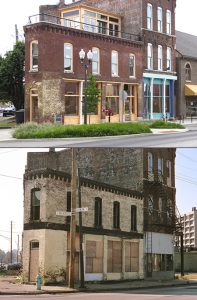RUSSOMANNO: Autonomous autos mean safer streets, stronger economy
With vehicle automation a transformative trend in transportation, it’s important that Indiana be a crossroads of research and development.
With vehicle automation a transformative trend in transportation, it’s important that Indiana be a crossroads of research and development.
Indiana should prioritize projects where diesel emissions are high and population is dense or particularly vulnerable.
Our legislators must act urgently and purposefully to provide incentives for high-performing individuals to become teachers and to stay in low-income urban and rural schools.
To challenge acrimonious language and call out vindictive behavior is not partisan; it is patriotic.
Bbased on our history and trajectory, it’s a pretty good bet that Indiana will continue on the path of good and innovative government, allowing your company to operate more efficiently here, thus allowing you to hire more talented colleagues and make more investments in your company.
Indiana is extremely progressive in its response to the opioid epidemic, pursuing a data-driven approach coupled with tactical steps to broaden access to treatment centers.
A thoughtful revamping of the I-65/I-70 split can improve traffic flow, restore community connectivity and spur new economic development downtown.
This is important stuff, way more so than whether we sell alcohol on Sunday.
Regardless of how this pitch and Amazon’s decision work out, let’s use this excitement and momentum to envision an Indianapolis positioned well for the next 50,000 jobs created, whether those jobs come in a smiling box or not.
The city of Columbus and Indiana University in Bloomington have partnered to implement a new vision for architectural education that will build upon the community’s rich history of modernism and leverage it as a living laboratory for design discovery and invention.
The baby-boomer generation is healthier and more active than its predecessor generations. Today, the average life span has increased to 76.2 years for a male and 81.1 for a female. So, if one is healthy and mentally and physically capable at 65, why exit?
To ensure donor endowment gifts generate income that keeps up with inflation, we do not spend all the investment returns each year.
In the context of annual higher education expenses of $15,000 to $60,000, these grants represent little more than lunch money and minor relief for parents.
Sure, you can have a profitable company with a toxic culture, but for how long?
I’m very happy to bid farewell to a depressing year in which I’ve watched America being dismantled to benefit the president and his cronies.
Here’s to a less riddled, mysterious and enigmatic 2018.

Compared with new construction, rehabilitation projects spend a larger percentage of costs on skilled labor, tend to keep wages and materials dollars within the community, and result in renovated buildings that tend to last longer and retain value longer than comparable new construction.
Only 30 percent of family businesses make it to the second generation, and only 15 percent make it to the third generation
By making the tax credit refundable or transferable, investments in Indiana companies would become more attractive to investors at a time our 20 percent tax credit value is lower than that of many “best in class” entrepreneurial states.
The Republican tax bills stand among the most backward-thinking pieces of tax legislation since the 1920s.